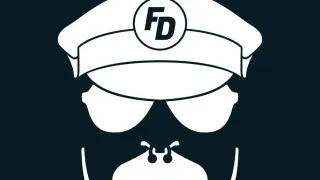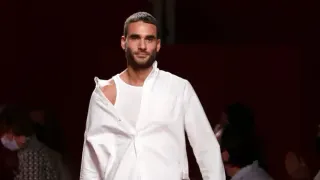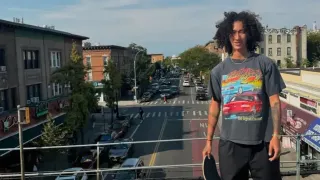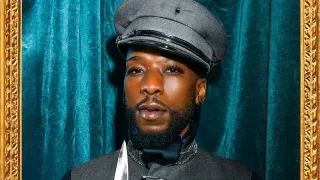
Dec 11
Tramell Tillman, the 'Severance' Star Who Is Very Much Connecting
Mark Kennedy READ TIME: 3 MIN.
Tramell Tillman didn't dream of being an actor when he was growing up. He yearned to be a storm chaser.
“I wanted to follow tornadoes. I wanted to study hurricanes. I wanted to see volcanoes up close. I wanted to experience an earthquake,” he says.
There was something about the power of nature that was breathtaking to the young Tillman: “Things like natural disasters or flowers, they don’t ask for our adoration or respect. They do what they need to do and they leave. That’s badass.”
Tillman may not have grown up to chase storms but he might know something about the hurricane of fame, having gone through quite a 2025. Now he's a force of nature.
The “Severance” star enjoyed a breakout Season 2 in which he became a more prominent manager at Lumon Industries, capped by a finale in which he led a marching band with full choreography. That led to making Emmy history as the first Black man to win a supporting actor in a drama series trophy. As the year ended, he collected his first Golden Globe nomination, too.
Tillman also played a spiky submarine captain opposite Tom Cruise in one of the biggest hits of the year, “Mission: Impossible — The Final Reckoning,” got asked to the Met Gala and was named a GQ Man of the Year. He's now earned a spot as one of The Associated Press’ Breakthrough Entertainers of 2025.
“It’s been quite a banner year,” Tillman says. “I want to continue to expand and to tell more stories, stories that we haven’t heard and stories that tell the same story but in a different perspective.”
Tillman, 40, was born in Washington, D.C., and raised in nearby community of Largo, Maryland, the youngest of six, something he says he brings to his unnerving Seth Milchick on the Apple TV series.
“I believe Milchick to be a people pleaser. He is dutiful, and in my childhood, I was very much the same way — gotta please the parents, gotta please the teachers,” says Tillman.
He credits “Severance” creator Dan Erickson and primary director Ben Stiller for incorporating his ideas about Blackness, code-switching and the historic Black college experience to Milchick. Not that he knows all the secrets.
“I am enjoying the fact that we don’t know who Milchick is even in the second season, but what we do see are splashes of his humanity coming through,” he says.
Tillman also added a cool glee to his Capt. Jack Bledsoe, the commanding officer of a U.S. Navy submarine Cruise's Ethan Hunt intercepts. (“You must be Capt. Bledsoe,” says Hunt. Replies the captain: “And you must be out of your mind.”) Hunt needs them to do some crazy things to save the world and Bledsoe should refuse, but he doesn't. Tillman sees a connection between the two big roles.
“They both serve something bigger than themselves,” he says. “I believe that’s why both of them are willing to go above and beyond, or they’re willing to risk themselves or their team to accomplish a mission. No pun intended.”
Tillman admires a host of performers, including Jeffrey Wright and Colman Domingo. He loves the versatility of Hugh Jackman, who can do Marvel movies and Broadway. And he adores the talent of Donald Glover, who acts, sings and writes.
“I’m a person who loves versatility. I’m inspired by that,” he says. “I think it’s beautiful to be able to do one thing and do it excellently, but to see someone who’s able to multiple things and carry it — execute it beautifully, artistically, intentionally — is wonderful.”
Tillman can next be seen in the Amazon/MGM film “Your Mother Your Mother Your Mother” and Lena Dunham’s Netflix film “Good Sex.” Taking a page from Jackman, he’s also signed up for “Spider-Man: Brand New Day.”
During his very excellent year, Tillman has learned to lean on friends, especially those outside of the world of entertainment, unfazed by the fancy parties and proximity to Cruise.
“My tendency — and I’m working on this — is to reach out and allow those people to be there to catch me,” he says. “Much of my life, I’ve had to learn how to lean on and catch myself. Life has a way of changing that.”






